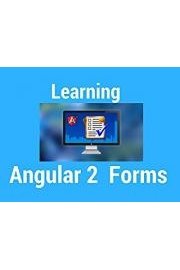

















-
CastVasco Ferreira
-
Channel

Learning Angular 2 Forms from Angular University starring Vasco Ferreira is a comprehensive tutorial series that dives deep into one of the most important aspects of web development - form handling. This show is specifically designed for developers who want to develop modern web applications using Angular 2 Forms.
Over the course of the series, Vasco Ferreira takes viewers through a broad range of topics related to form handling in Angular 2, starting from the basics and moving gradually towards more complex concepts. From template-driven forms to reactive forms, the series covers everything that is required to master this important aspect of Angular 2 development.
The Learning Angular 2 Forms series begins with a detailed introduction to the concept of Forms in Angular 2, followed by a comprehensive overview of the different types of forms in Angular 2. It then dives deep into Template-Driven Forms, one of the most widely used types of forms in Angular 2.
In this section, Vasco covers different topics such as form validation, form submission, form loading, and more. He walks viewers through the process of building a template-driven form right from scratch, explaining every step along the way.
After covering Template-Driven Forms, the series moves on to Reactive Forms, which are more powerful and flexible than Template-Driven Forms. Vasco covers all of the important concepts related to Reactive Forms, starting from basic form setup to more advanced features like dynamic forms, form arrays, and nested forms.
Towards the end of the series, Vasco also covers Custom Form Controls, a powerful feature that enables developers to create their own custom form controls in Angular 2. He explains how to create custom validators, custom form controls, and more, using real-world examples and code snippets.
Throughout the Learning Angular 2 Forms series, Vasco Ferreira maintains a steady pace, making it easy for viewers to follow along and grasp even the most complex topics. He also takes great care to explain key concepts in detail, ensuring that viewers have a clear understanding of what's happening at every step.
In addition, the show also comes with a wealth of resources and practice exercises. From source code to interactive quizzes, everything is included to help viewers master Angular 2 Forms.
Overall, Learning Angular 2 Forms from Angular University starring Vasco Ferreira is a highly recommended tutorial series for anyone who wants to learn Angular 2 Form in-depth. It offers a comprehensive, in-depth look at the subject, with clear explanations and plenty of practice exercises to keep viewers engaged and learning along the way. So, if you're looking to upgrade your Angular 2 development skills, this series is definitely worth checking out.
Learning Angular 2 Forms is a series that ran for 1 seasons (18 episodes) between and on Angular University

















